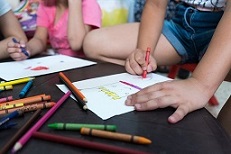Clear the Clutter, Post
- On Nov, 15, 2022
- Tutoring Primary
- Blog
Clear the Clutter
Clear the Clutter. Classroom clutter confuses, especially weaker students. Now there’s a run of Cs for you! The classroom clutter overhead, on every wall, and every space harks back to earlier decades when Whole Language Theory dominated the teaching of literacy. Associated with Whole Language in the primary classroom was the idea of immersion in language and this remains one of the persistent remnants from that era.
What to do about Classroom Clutter:
1 Every written word should have a purpose.
2 Remove old materials from walls and cord lines across the classroom.
3 Student work that is displayed can be returned so they can take home.
4 If old materials are still relevant, refresh the lot OR keep only the pieces that students are still working on.
Links: Early Primary School, Page Middle Primary School, Page Upper Primary School, Page
Too much written material around can be confusing for students with certain disabilities as well. Clear the Classroom Clutter and children find clarity in the written message. It makes it harder for them to differentiate in this forest of material. Some teachers are better than others at taking down old material. Everything that is hung, pasted and pinned can have meaning and relevance. Let’s keep materials up-to-date.
Links: Developmental Language Disorder [DLD], Post Autism and Schools, Post Vision Impaired Children – Lessons
This environment poses problems for the dyslexic child as well. What helps dyslexic kids are:
~having longer spaces between words and
~using text with bigger print.
So it makes a nonsense for children to be immersed in literacy materials everywhere. Clearing classroom clutter can help. This is a legacy of Whole Language Theory and it will take time to be rid of it completely.
Fair use/dealing claimed for illustrations.